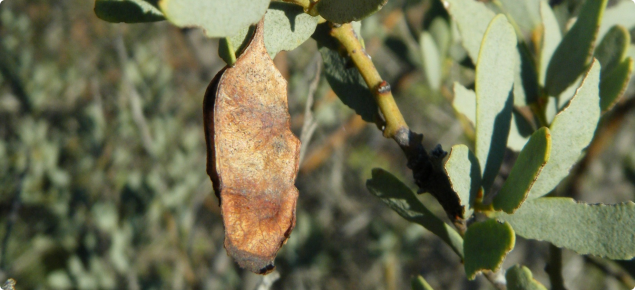Indicator value
Bardie bush is is an indicator of poor pasture condition on the Ashburton floodplain and to the south when it is abundant in the pasture. Bardie bush has no indicator value in spinifex country. Bardie bush populations commonly increase following degradation of pasture through heavy grazing or after floods.
Forage value
Bardie bush is readily browsed in dry periods and the flowers and pods are sometimes preferentially grazed. Young plants may be very heavily grazed when livestock numbers are high.
Habitat
Various soils and habitats
General description
Bardie bushes are usually short-lived, straggly low shrubs that can grow to 3m tall, but can be relatively tall shrubby trees growing up to 8m tall. The phyllodes have a single central vein and are thick, flat and rounded at the tip. The size and shape of the phyllodes vary greatly, but are usually 1–5cm long. Pairs of straight spines up to 7mm long are commonly found at the base of phyllodes on young plants. The globular flowers are usually pale yellow (sometimes bright yellow). Each flower head is about 6mm across on a stalk about 1cm long. The pods are flattish and a light golden brown when fresh, about 1.5cm wide and up to 8cm long.
Acacia victoriae and A. synchronicia are both called bardie bush and are closely related, but are recognised by taxonomists as distinct species. The practical application of this distinction is limited because the indicator value of both plants is the same and most of the time it is difficult to tell them apart. The only way to reliably tell one from the other in the paddock is by examining the flowers.


